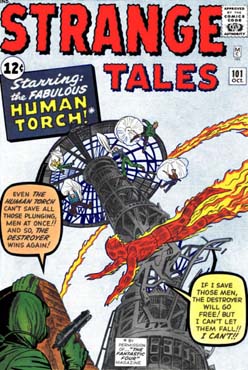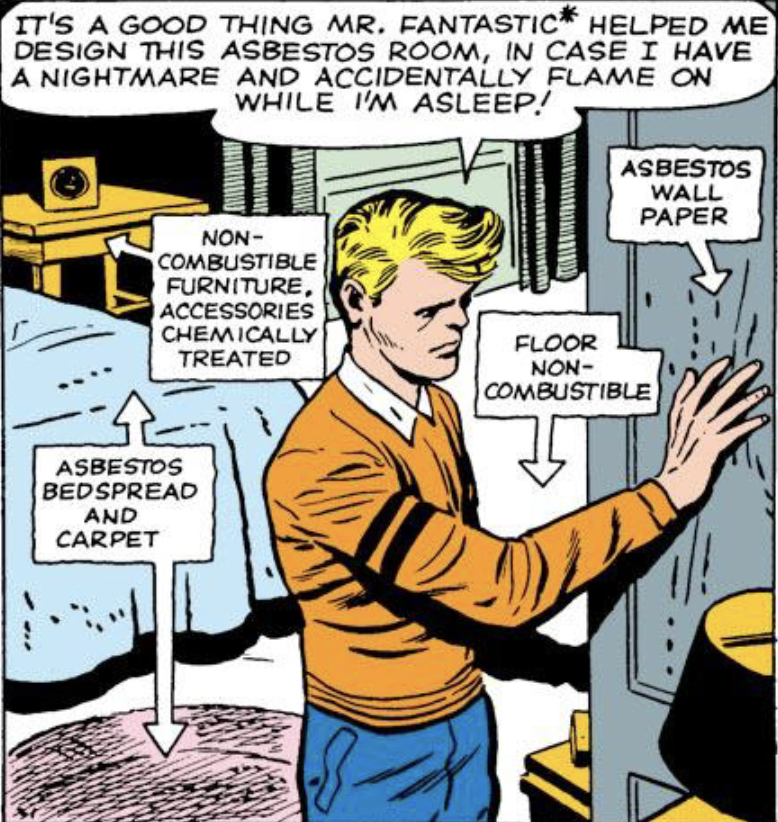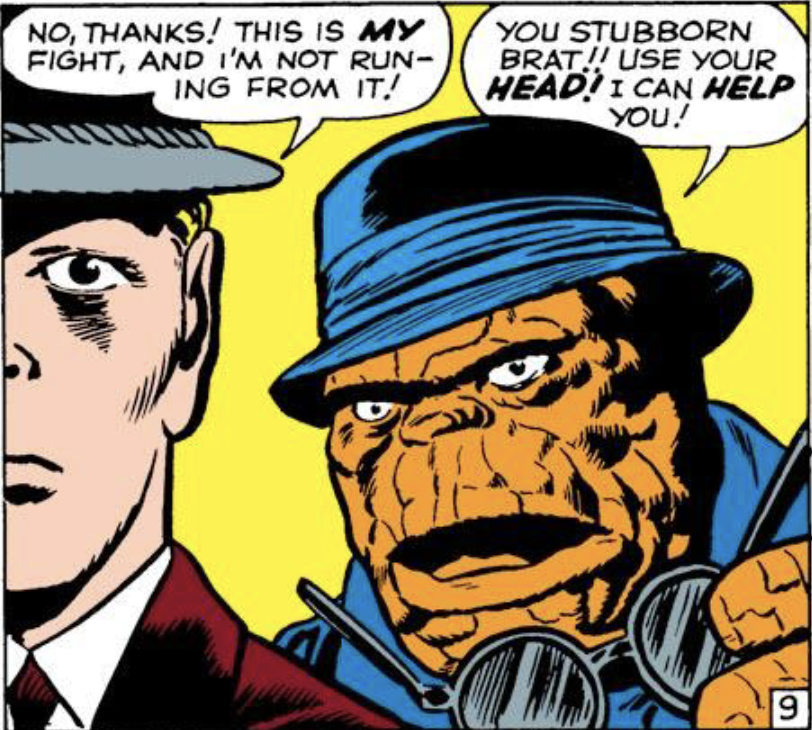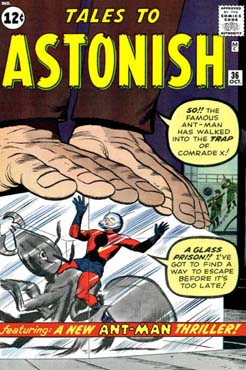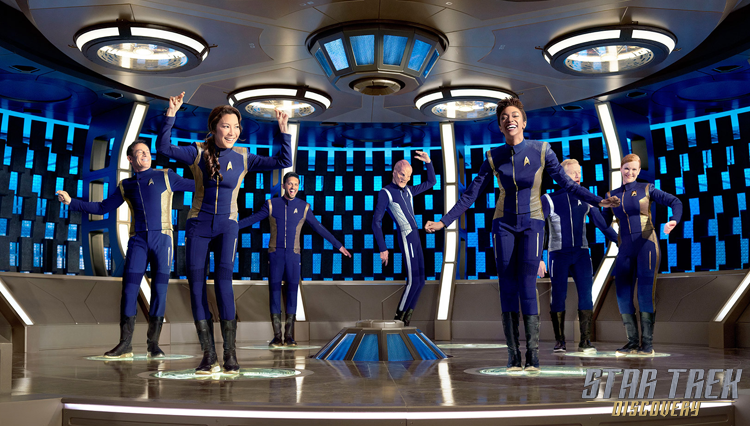Writer: Stan Lee
Script: Larry D. Lieber
Penciller: Jack Kirby
Inker: Dick Ayers
“The Human Torch”
July 10, 1962
Have to admit, I was surprised this was a thing. Considering he already appears in his own magazine, and a popular one at that, giving the Human Torch his own space, even within the pages of an anthology magazine, seems a bit much. This is especially so when the company is still working on setting up their heroes as something different from DC’s stock of characters. I also had to wonder as Johnny comes in for a landing outside Sue’s home he thinks how everyone in town knows Sue is the Invisible Girl, but Johnny says no one knows that he is the Torch.
What?
I mean, the guy was just in Washington in FF#7 as Reed made a speech. It’s not like he wears a mask. How is it that his identity has been kept secret? That makes no sense. He prepares for bed in his asbestos-treated bedroom and recalls the events that led to him becoming the Human Torch.
As he does, the Destroyer is staking out an amusement park that is to open soon in town. He sends the owner a warning to pay up or there will be a disaster. The owner ignores it so what follows is a series of accidents that the Torch is forced to risk exposing himself in order to help those in danger. In many respects, after everything the Fantastic Four has been through, this seems like a pretty mundane case. And oddly enough, we don’t see the Destroyer for pages on end and then suddenly, he challenges the Torch to a dual.
What?
This prompts the Thing to make an appearance, offering to take the fight on himself, but Johnny won’t have it. The Thing leaves in disgust as we get his little cameo out of the way. The Torch makes his way to the meeting place, a cabin on the outskirts of town. He is quickly subdued, but before the Destroyer can do anything, some teenagers approach the cabin and he runs off.
The Torch ponders why the higher rides of the park are always the target and then he realizes that it makes a good vantage point to see a Communist sub that is just offshore. The Torch forces the sub to surface by boiling the water and then with the help of the Navy, he quickly finds the Destroyer. In a very Scooby Doo moment, they unmask him to reveal that he’s the local newspaper publisher who was working with the Commies and did what he did in order to stop the opening of the park which would ruin his operation.
This is a strange tale all right and I’m not sure where I land with it. I wasn’t fond of the beginning, but the ending was solid. Still not sold on the idea of the Torch having his own comic strip. Time will tell if this is really worth it
Writer: Stan Lee
Penciller: Jack Kirby
Inker: Dick Ayers
“The Challenge of Comrade X”
July 10, 1962
So by the time we open this story, the Ant-Man has made a name for himself as a superhero. He’s as well known around the world as the Fantastic Four. In fact, after news of his latest exploits reaches the Kremlin, it is decided to send Comrade X after him. The secret of height control would give the Communist army a great advantage when they tried to invade a country.
It’s funny, but for a reluctant hero, Hank Pym has a setup similar to most superheroes in terms of secret entrance and such. He launches himself from a mechanical catapult that hurtles him toward the police station after hearing of the call for him by his ants. He learns from a jilted lover of Comrade X of the plans to capture him. He tries to get the jump on the spy but is captured instead. Using his control of the ants, he calls them to get him free from the glass case Comrade X has imprisoned him in.
The story progresses quickly from there as Ant-Man calls for help and then reveals that Comrade X is really Madame X, the jilted lover, in disguise. Overall, not a bad little tale. In reading these early stories though, I had to wonder when they introduce Janet Van Dyne. I guess we’ll find out together.


